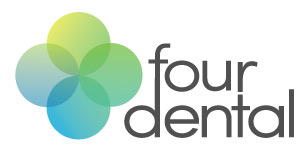San Francisco’s Gum Disease Experts
Have you ever heard the expression, “Your teeth are fine, but your gums have to go?”
There’s more truth to this than you may think because of periodontal disease, better known as gum disease or gingivitis.
This article will explain how the doctors at Embarcadero 4 Dental treat this potentially troublesome problem.
What is Gum Disease?
Gingivitis is the most common and mildest form of periodontal disease. If you have gingivitis, you may notice that your gums bleed when you brush or floss your teeth. Gingivitis is typically reversible and easily treated.
If gingivitis is left untreated, it can advance––over time––to become periodontitis. This is caused by the build-up of plaque that can spread and grow under your gum line, with the bacteria from plaque irritating your gums.
What are Some Signs of Gum Disease?
Gingivitis can cause your gums to become red, swollen and bleed easily, which is most often the result of not brushing or flossing enough.
With periodontitis, your gums can separate or pull back from your teeth, form pockets that can become infected, then deepen until both the gum tissue and your bone are destroyed. This can eventually lead to tooth loss.
The bad news is that with both gingivitis and periodontitis, the symptoms are very mild, so you may not be aware that you may have a problem until gum disease is more advanced.
What Causes Gum Disease?
There are a wide variety of factors for periodontal disease.
Some of the most common causes are:
- Aging
- Bridges that may not fit properly
- Crooked teeth that may restrict your ability to floss close to the gum line
- Defective or loose fillings
- Diabetes and other systemic diseases like cancer or AIDS
- Genetic disposition
- Smoking or chewing tobacco
- Poor nutrition
- Puberty
- Hormonal fluctuations due to oral contraceptives and pregnancy
- Stress
- Substance abuse
- Using certain medications such as antidepressants, steroids, and some heart medications.
What are Some Warning Signs of Gum Disease?
Besides the bleeding or swollen gums mentioned above, as well as seeing your gums recede, you may encounter pain when chewing, notice a persistently bad odor or taste in your mouth, discover that your teeth are loose, see tartar and plaque on your teeth, and be aware of changes in your bite or the fit of partial dentures.
How Can Gum Disease be Prevented and Treated?
There are a variety of ways to prevent or treat your gum disease. These include non-surgical and surgical treatments, laser treatments, dental implants, and gum lifts.
At home, you can:
- Brush your teeth more often after meals to remove food and plaque
- Floss at least once a day to remove plaque between your teeth
- Use an electric toothbrush
- Gargle with an anti-plaque rinse
Want to Meet a Periodontal Specialist?
Most dental practices don’t have an onsite Periodontal Specialist.
But we do and her name is Connie Oh, DMD. As a Periodontal Dentist, she can provide you with the right treatment for your particular situation.
What You Can Expect at Your Appointment
Dr. Oh will take a small probe and place it between your teeth and gums to determine the depth of your periodontal pockets. She’ll then assess the health of your gums before making any recommendations.
We are Here to Help with Your Gum Disease
Embarcadero 4 Dental has been preventing and treating gum disease in the San Francisco Embarcadero area since 1986.
We provide customized, personalized solutions by offering the highest quality care, using state-of-the-art equipment––especially digital X-rays––as well as Cerec crowns in a single office visit, Invisalign® and many other ways to make you smile.
We’d be happy to schedule your initial consultation when you call 415-576-9800.

